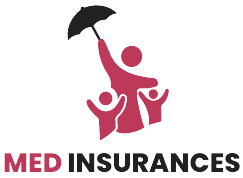Health insurance can seem complex and intimidating, especially if you’re new to it. At Med Insurances, we’re here to simplify the process and help you understand the essentials. This beginner’s guide will walk you through the key aspects of health insurance, ensuring you have the knowledge to make informed decisions.
What is Health Insurance?
Health insurance is a type of coverage that pays for medical and surgical expenses incurred by the insured. It can reimburse the insured for expenses incurred from illness or injury, or pay the care provider directly. Having health insurance can protect you from high medical costs and provide access to a range of health services.
Key Terms to Know
Before diving deeper, it’s important to familiarize yourself with some common health insurance terms:
- Premium: The amount you pay for your health insurance every month.
- Deductible: The amount you pay out-of-pocket for healthcare services before your insurance begins to pay.
- Copayment (Copay): A fixed fee you pay for a specific service or prescription, separate from your deductible.
- Coinsurance: Your share of the costs of a healthcare service, calculated as a percentage of the total charge, after you’ve paid your deductible.
- Out-of-Pocket Maximum: The most you will have to pay for covered services in a plan year. After you spend this amount on deductibles, copayments, and coinsurance, your insurance plan covers 100% of the costs of covered benefits.
Types of Health Insurance Plans
Health insurance plans come in various types, each offering different levels of coverage and flexibility:
- Health Maintenance Organization (HMO): Requires members to use healthcare providers within a specific network and to get a referral from a primary care doctor to see a specialist.
- Preferred Provider Organization (PPO): Offers more flexibility by allowing members to see any healthcare provider, though it costs less to use providers in the plan’s network.
- Exclusive Provider Organization (EPO): Combines features of HMOs and PPOs. You must use providers in the network except for emergencies, but you do not need a referral to see specialists.
- Point of Service (POS): Requires a referral from a primary care doctor to see a specialist but allows you to use out-of-network providers at a higher cost.
Choosing the Right Plan
When selecting a health insurance plan, consider your healthcare needs and budget. Here are some factors to keep in mind:
- Coverage Needs: Think about the types of healthcare services you use most frequently. Do you need regular prescriptions, mental health services, or maternity care?
- Budget: Balance the cost of premiums with out-of-pocket expenses like deductibles, copayments, and coinsurance. A plan with a lower premium may have higher out-of-pocket costs, and vice versa.
- Network: Ensure your preferred doctors and hospitals are included in the plan’s network to avoid higher out-of-pocket costs.
Tips for Enrolling in Health Insurance
- Assess Your Needs: Evaluate your health needs and those of your family. Consider any ongoing medical conditions, regular medications, and planned medical procedures.
- Compare Plans: Use comparison tools to look at different plans side by side. Consider coverage details, costs, and network restrictions.
- Check for Subsidies: Depending on your income, you might qualify for subsidies or tax credits to help lower your premium costs.
- Read the Fine Print: Make sure you understand the terms of the plan, including what is covered, what is not, and your financial responsibilities.
Conclusion
Understanding health insurance is crucial for protecting yourself from high medical costs and ensuring access to necessary health services. By familiarizing yourself with the basics, comparing plans, and carefully considering your needs and budget, you can make informed decisions about your health coverage. At Med Insurances, we are here to provide the resources and support you need to navigate the complexities of health insurance with confidence.
